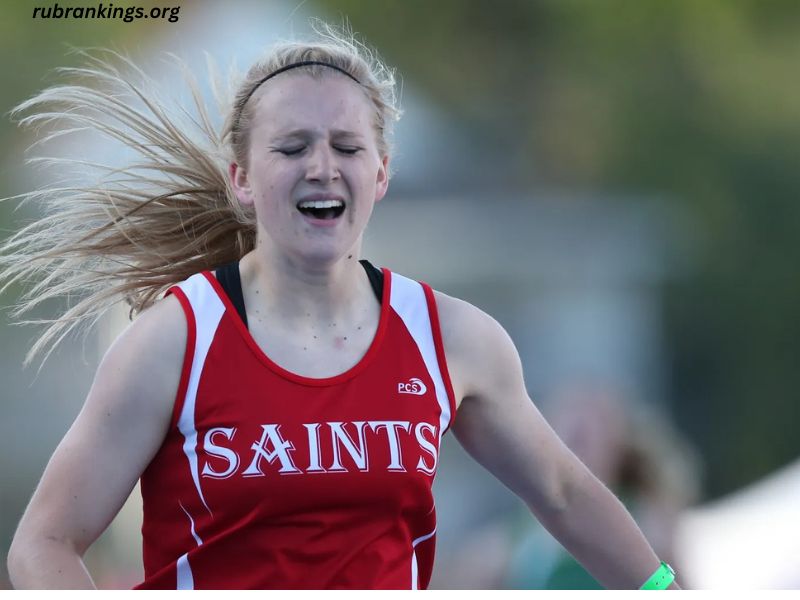A track meet is a dynamic and exciting event, showcasing the talent and perseverance of athletes as they compete in various events. Whether you’re a first-time spectator, a coach, or an athlete, understanding the order of events at a track meet can enhance your experience and help you navigate the competition. This guide will provide a detailed overview of the typical order of events at a track meet, outlining the structure and flow of the day, and helping you to better appreciate the intricacies of track and field competitions.
What Is a Track Meet?
A track meet is an organized event where athletes compete in various track and field events. These events are divided into running events, field events, and sometimes combined events like the decathlon or heptathlon. Track meets can range from small, local competitions to large, professional events, with the Olympic Games and World Championships being the ultimate goals for many athletes.
At its core, a track meet is designed to test an athlete’s speed, strength, endurance, and technique across a variety of disciplines. The order of events at a track meet is carefully planned to ensure smooth transitions between events, provide athletes with enough recovery time, and maintain the excitement for spectators.
Types of Events at a Track Meet
Before diving into the specific order of events, it’s essential to understand the various types of events that typically take place at a track meet:
- Track Events – These are the running events, which test an athlete’s speed, endurance, and strategy. They include sprints, middle-distance, long-distance races, hurdles, and relays.
- Field Events – These events take place off the track and include jumping and throwing events like the long jump, high jump, shot put, discus, javelin, and pole vault.
- Combined Events – In these events, athletes compete in a series of track and field events, with the overall winner determined by a points system. The decathlon and heptathlon are the most well-known combined events.
Understanding the Order of Events at a Track Meet
Track meets can vary in terms of the events offered, the number of athletes, and the age or skill level of the competitors. However, most track meets, especially those held at the high school, collegiate, and professional levels, follow a specific order of events to ensure smooth and efficient operation.
While there can be some variation depending on the type of meet, the general order of events at a track meet is as follows:
1. Running Events: Sprints
The first events typically involve the shorter, faster sprints. These events are designed to test an athlete’s explosive speed and acceleration over short distances. The common running events at the beginning of a track meet include:
- 100 Meter Dash (Women/Men): This is one of the most iconic sprint events, showcasing the raw speed of sprinters. The 100-meter race is run in a straight line, often with athletes in separate lanes on a standard 400-meter track.
- 200 Meter Dash (Women/Men): This race is slightly longer and involves one-half of the track. Athletes must maintain their speed and power while navigating the curve of the track.
- 4×100 Meter Relay: This is a team event where four athletes pass a baton to each other in a race around the track. The 4×100-meter relay is one of the most thrilling races due to the fast exchanges and competitive nature.
2. Hurdles and Distance Events
Following the sprints, the track meet often transitions into hurdles and distance events, where athletes face more strategic challenges and endurance demands.
- 100 Meter Hurdles (Women) / 110 Meter Hurdles (Men): These events are sprints that include hurdles, forcing athletes to jump over obstacles at high speed. The women’s event consists of 100 meters with ten hurdles, while the men’s event covers 110 meters.
- 400 Meter Dash (Women/Men): A full lap around the track, this race requires both speed and endurance. It is often considered one of the most challenging sprints.
- 400 Meter Hurdles (Women/Men): This event involves a full lap around the track, with athletes jumping over hurdles placed at regular intervals. It is considered one of the more demanding events as it combines speed, endurance, and agility.
3. Middle-Distance and Long-Distance Events
These events test athletes’ endurance and pacing skills. The middle and long-distance events follow the sprints, providing a transition from short bursts of speed to more sustained efforts.
- 800 Meter Run (Women/Men): Known as the “two-lap” race, this event challenges athletes to balance speed and stamina as they aim for the optimal pace over two laps around the track.
- 1500 Meter Run (Women/Men): A staple in both track meets and the Olympic Games, the 1500-meter race is a middle-distance event that pushes athletes to run at a fast pace for three and three-quarters laps around the track. The 1500 is often considered the “metric mile.”
- 5000 Meter Run (Women/Men): The 5000-meter race is a long-distance event that tests the athlete’s ability to maintain a consistent pace over 12 and a half laps on the track.
4. Relay Events
Relay races often provide a thrilling end to the running events, where teamwork plays a key role.
- 4×400 Meter Relay (Women/Men): The 4×400-meter relay involves four athletes, each running one lap around the track. It is often the final event in track meets and is famous for its exciting finishes.
5. Field Events
Field events are typically held simultaneously with running events, with athletes competing in the infield area while races take place on the track. These events generally span the entire day and include both individual and team-based competitions. Field events include:
- Long Jump (Women/Men): Athletes run down a runway and leap into a sandpit, with the goal of jumping as far as possible.
- High Jump (Women/Men): Athletes must jump over a horizontal bar without knocking it down. The bar is raised progressively until only one athlete remains.
- Shot Put (Women/Men): In this event, athletes throw a heavy spherical object (the shot) as far as possible. Technique and strength are critical components of success in the shot put.
- Discus Throw (Women/Men): Athletes throw a heavy disc-shaped object as far as possible, using a spinning motion. Precision and technique are key.
- Javelin Throw (Women/Men): Athletes throw a spear-like object as far as possible, utilizing both speed and strength.
- Pole Vault (Women/Men): Athletes use a pole to vault themselves over a high bar. This event is one of the most challenging, requiring strength, technique, and timing.
6. Combined Events
Combined events like the decathlon and heptathlon are multi-day competitions where athletes participate in several track and field events, with points awarded based on performance in each event. These events test an athlete’s overall athleticism, combining speed, strength, and endurance.
- Decathlon (Men): Comprising ten events over two days, the decathlon includes sprints, jumps, throws, and distance events.
- Heptathlon (Women): The heptathlon consists of seven events spread over two days, testing athletes in hurdles, sprints, throws, and jumps.
7. Other Specialty Events
Some track meets may feature specialty events or unique formats designed to offer variety and excitement. These can include:
- 4×200 Meter Relay
- Steeplechase (3000 meters, Women/Men): This event combines distance running with obstacles like water jumps and barriers.
- Wheelchair Races: These events are designed for athletes with physical disabilities and follow similar structures to traditional races.
Final Thoughts
The order of events at a track meet is carefully organized to ensure that athletes have time to recover between their events while maintaining a steady flow throughout the competition. The balance between running events, field events, and relays helps keep the meet dynamic, providing spectators with a variety of athletic feats to admire.
Understanding the order of events at a track meet can enhance your appreciation of the competition and help you plan your day if you are attending as a spectator or coaching athletes. Whether you’re focused on the sprints, endurance races, or field events, there’s something for everyone in the world of track and field!



